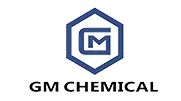Company News
The Significance of Heterocyclic Compounds in Anti-Cancer Drug Style
Dec. 23, 2020
The Significance of Heterocyclic Compounds in Anti-Cancer Drug Style
Heterocyclic compounds are vital structural elements of a number of the anti-cancer drugs available on the marketplace today. Undoubtedly, of the unique molecular anti-cancer agents approved by the FDA in between 2010 as well as 2015, practically two-thirds included heterocyclic rings within their structures.
Their occurrence in anti-cancer medicine style can be partly credited to their being very common in nature, with a huge variety of mobile procedures and mechanisms having developed the capacity to engage with them. Their adaptability indicates there are several metabolic pathways as well as cellular procedures within cancer pathology that can be susceptible to heterocycle-based medicines.
In this post, we consider some of one of the most crucial heterocyclic substances currently implicated in cancer cells treatment, both on the market as well as in development, go over the residential or commercial properties that make them useful as anti-cancer medicines, and think about the benefits of consisting of heterocycles within high-throughput testing libraries.
Defined as cyclic substances including ring participant atoms of carbon as well as at the very least another component (such as nitrogen, oxygen and sulfur), heterocycles prevail in biology, including in a wide range of frameworks from enzyme co-factors with to amino acids as well as healthy proteins. They play an essential duty in the metabolic rate of all living things, as well as are used at virtually every phase of the many biochemical processes required to maintain life.
Their prevalence is partly down to the wide variety of communications these frameworks are entailed with, made possible as a result of the physicochemical properties of their heteroatoms that can behave as either acids or bases, relying on the pH of their setting.
The capability of heterocycles to engage in a wide variety of intermolecular interactions, including hydrogen bond donor/acceptor ability, pistacking communications, steel co-ordination bonds as well as van der Waals and also hydrophobic forces, allows them to bind with enzymes in a wide variety of ways. In addition, their vast array of ring dimensions and architectural permutations indicates heterocycles been available in a broad series of sizes and shapes, enabling them to match the equally diverse architectural range of enzyme binding pockets.
With their useful versatility, extremely usual occurrence in nature, as well as participation in great deals of organic pathways, will the raised financial investment in heterocyclic-based anticancer drug layout remain to warrant their place in the race to combatting among the world's most devastating diseases?

The role of heterocycles in anti-cancer drug design
It is specifically due to the fact that heterocycles are so widespread in nature that they have actually come to be so crucial for anti-cancer medicine design. Representing an exceptionally large friend of molecules with such an unmatched level of irregularity in regards to the communications they can involve with, heterocycle-based substances not surprisingly have formed the basis of medicine treatments time after time.
As several enzymebinding pockets are predisposed to interacting with heterocyclic moieties, heterocycles are a great choice when making molecules that will interact with targets and interrupt the organic paths connected with cancer cells development. Paths related to cell development as well as development are typically targeted by such anti-cancer treatments. Furthermore, the loved one simplicity by which heterocyclic rings can be customized with extra substituents allows them to cover a wide location of chemical area, more qualifying them as superb beginning points for anti-cancer drug growth.
As a result of these factors, heterocyclic structures have long played a key duty in anti-cancer medicine layout, including plainly in anti-cancer medicine substances presently offered on the marketplace. Certainly, 65% of the anti-cancer drugs approved market authorization by the FDA between 2010 and 2015 included a heterocycle, as well as heterocycles develop the basis of a lot of the anti-cancer agents currently in development today.






